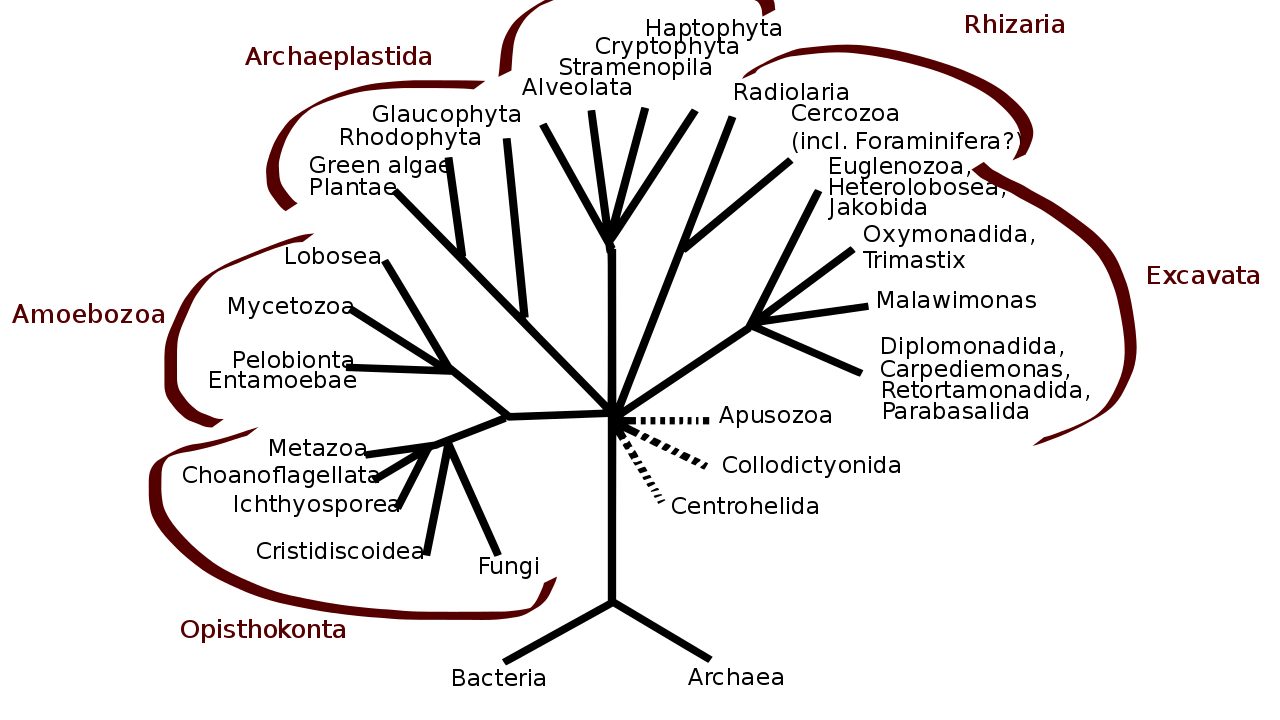Although frequently neglected, animals and fungi share a close evolutionary relationship. Despite the huge differences in morphology, ecology, life history and behaviour they represent the two major lineages within Opisthokonta, a clade that was earlier referred to as the “Fungi/Metazoa group” in the Tree of Life. You may find a brief wiki overview of opithokonts at https://en.wikipedia.org/wiki/Opisthokont.
Ocaña-Pallarès et al. (2022) sequenced the genomes of four unicellular protist species branching off at crucial positions in the Opisthokonta phylogeny, namely the three holozoan Ministeria vibrans, Pigoraptor vietnamica and P. chileana on the Metazoa branch and the holomycote Parvularia atlantis on the Fungi branch. Together with previously sequenced species they analyze a huge dataset including data from 83 eukaryotic species. This comprehensive dataset allowed them to comprehensively address the genetic trajectories and evolutionary changes leading up to the two Metazoa and Fungi.
The authors found a broader differentiation at the level of gene function in animals than in fungi, and lower divergence in gene content between fungi and protists. They also found net gains of functionally important genes on the ancestral path to Metazoa (animals) showed accumulated net gains of functionally important genes, but first of all in those relevant for multicellularity. In fungal ancestors, however the authors noted net losses of functional categories. Furthermore, gene duplications and gene fusions were prevalent in Metazoa whereas there were frequent horizontal gene transfers in fungi and protists.
This is an exciting paper providing significant new insights into the genetic trajectories in the deep branch of the Tree of Life that led to the origin of Metazoa and Fungi. From my point of view the paper marks a milestone in our understanding of the early stages in the evolution of multicellularity; a must read for biologists published in the journal Nature in September this year.
Reference: Ocaña-Pallarès et al. (2022) Divergent genomic trajectories predate the origin of animals and fungi. Nature 609: 747-753. https://doi.org/10.1038/s41586-022-05110-4
![]()

Hi,
I’m Edu, an author of this manuscript. I have seen this post on Twitter. Thanks for sharing your thoughts on the manuscript, I am glad you liked it! Just a very minor comment in case it may be helpful: ‘P. chileana’ also belongs to Holozoa (what is referred to as the “Metazoa branch”). Thanks again!
Hi Edu, thank you very much for your positive feedback. An exciting paper indeed. I adjusted the text in line with your comment in order to avoid misunderstanding of the placement of P. chileana.